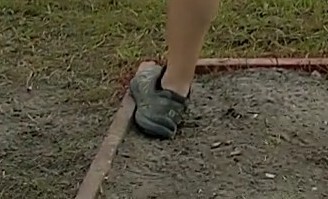Pictured is a cracked Dillon 650 powder die body.
Press was not belling out the case mouths enough to seat a bullet. I kept adjusting the die depth to try and get it to bell the case mouth more but even with the die set deeper, no changes.
Then one case went into the bullet feeding stage completely empty. No powder. I look up, and the powder stage had completely cracked.
Had to mark 300 rounds as possible squibs. I don't have a powder check die in stage 3 (I have a bullet feeder in 3 and then a seat and crimp die in stage 4 and 5). I do watch stage 3 on each pull but it's better to mark the whole lot as questionable and use in practice, than blow up one of my open guns by trying to use the ammo in a match.
I checked the round that was ahead in stage 4 and it had powder, but it's still better to play it super safe when loading 9major and just mark the whole lot as practice ammo.
I ended up loading 300 more rounds, to replace the 300 "questionable" ones.
What a nightmare
I don't know if I could recommend it. I started out a decade ago sort of enjoying it but now it's just a chore.
And that's with a DAA automatic primer tube filler, a davinci automatic decapping machine, a rollsizer machine, mr bullet feeder and Dillon 650.
I only pull the handle, pretty much all the other prep is me just supervising a machine and I friggin hate it
I'm also still pissed about buying primers when they were $.10 A PIECE
I remember buying 5k primers for $150, it makes me sick to my stomach when I was buying 5k for almost 3x that price. I can't even type out what the cost was (do the math) and it's not like I just ordered one.
Is it possible to weigh known good rounds and components and compare them to the questionable ones to get a better idea of if they’ll squib?
Great question. It had crossed my mind, but the scale can't tell you with enough confidence.
I'm loading 9major with 9gr of 3n38 which is nearly double what normal 9mm is.
A 9mm case is something like 60 or so grains, the bullet is 124gr.
So even using 9major loads, the powder charge weight is not even 5% of the total weight of the round. The margin is too small to really be sure. For a regular 9mm charge it would be something like 2% of the total weight. There's too much variation in the rounds to even take one, tare the scale with it and then use to check all the others. It wouldn't give useful results. Round to round you could see variations of 3gr, even when none are squibs.
I load and box 100 rounds at a time and stack them in order. I know exactly what boxes have the least likelihood of having a squib, since they had already been case gauged and boxed before the powder dropper broke.
The total number of squibs were talking is, at max, ONE. Out of 300 rounds but I am almost 100% certain I caught the first round that didn't have powder and immediately rectified.
But, it's not worth using those rounds in a match since a squib could cost me a stage, or worse cost me a gun.
I'm being incredibly paranoid, marking 300 rounds as "bad" because of ONE possible defect that I am almost certain I caught before it proceeded in the press, but I've loaded 100k rounds and have had no major issues ever, so it's worth being super super cautious.
I'll just set them aside and use in practice where I do drills with single shots like strong hand / weak hand. Those kind of drills you aren't rapid firing so it'll give plenty of chance to detect a squib and stop.



